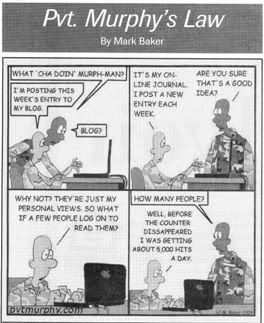Color Career Counselor
I came across this article and career testing based on color preferences, which as an art therapist intrigued me. Here is what it's all about:
Can Your Favorite Color Determine Your Perfect Job?
Rachel Zupek, CareerBuilder.com writer
Do you ever wish finding the perfect job could be as easy as 1, 2, 3? According to new research, it might be as easy as red, yellow or blue.
That's right; by determining which primary, secondary and achromatic colors you prefer most and least, you can figure out a successful career path based on how you approach work, the types of workplaces where you work best and how you handle work tasks.
The Color Career Counselor, powered by The Dewey Color System -- the world's only validated, non-language color-based career testing instrument -- uses color preferences to determine successful career paths. Dewey Sadka, author of "The Dewey Color System," says using colors instead of a questionnaire eliminates the chasm between self-perception and self-truth and reveals your core motivations.
"What if you misinterpret a [career assessment] question or the choices don't reflect your personality?" Sadka asks. "Color preference indicates your personality's best career fit. Preferred colors indicate passionate career pursuits; non-preferred choices establish workplace skills you least enjoy."
How it works
The Color Career Counselor is simple. First, you click your preferred primary color (red, yellow or blue). From there, you choose your preferred secondary (green, purple or orange) and achromatic (black, white or brown) colors.
The Color Career Counselor is simple. First, you click your preferred primary color (red, yellow or blue). From there, you choose your preferred secondary (green, purple or orange) and achromatic (black, white or brown) colors.
"Your preferred colors determine how you attack each task. They indicate your talents -- what you prioritize first in order to be successful. They also highlight what you overdo, especially when you feel great," Sadka says.
For example, if you're partial to yellow, you're information-driven; blue preference people are idea-driven and people who prefer red are results-driven. If you favor green as your secondary color, you realistically evaluate situations; purple indicates you like fact-finding possibilities and orange signals that you scrutinize feasibility. Finally, if black is your choice from the achromatic colors, you consider value above all else; white shows that you like having options and brown confirms that you like implementation and accomplishing tasks.
On the other hand, your least preferred colors determine tasks and issues that you tend to forget.
For example, if your least favorite color is orange, sometimes you over-commit yourself by trying to do too much at once. If you dislike the color green, you try to fix everything for your colleagues rather than making them do it themselves. Or, if your least favorite is teal, you feel a deep need to prove you are competent and you don't care what other people think.
In managing these areas head-on, Sadka says you won't miss the incidentals that could impede your success.
Put to the test
To see for myself if this "scientific" test was for real, I took the test three different times and got the same results each time, affirming that I am, in fact, in the right career.
To see for myself if this "scientific" test was for real, I took the test three different times and got the same results each time, affirming that I am, in fact, in the right career.
I'm a "creator," says the Color Career Counselor. I'm "nonconforming, impulsive, expressive, romantic, intuitive, sensitive and emotional." It says I enjoy working independently, being creative, using my imagination and constantly learning something new.
For my suggested "creator occupations," I was given an extensive list of careers that included jobs I've considered (architect, interior decorator, English teacher), jobs people told me I should pursue (author, creative director, public relations) and jobs that I currently hold or aspire to in the future (reporter and editor).
What about you?
So are you a researcher, creator, social manager, persuader, doer or organizer? To find out what career path you should be following based on your preferred colors, here are a few examples of what certain choices say about you, and the careers and skills that compliment them.
So are you a researcher, creator, social manager, persuader, doer or organizer? To find out what career path you should be following based on your preferred colors, here are a few examples of what certain choices say about you, and the careers and skills that compliment them.
If you prefer: yellow, purple and white: You're the communicator.
You create profitable perspectives -- how to break into new accounts or be heard by other employees. By simply identifying a client's point of view, you develop strategies that open doors, even if they had already been shut. Your excellent communication skills can create problem-solving forums. Careers in corporate communications, marketing or religious occupations work best.
You create profitable perspectives -- how to break into new accounts or be heard by other employees. By simply identifying a client's point of view, you develop strategies that open doors, even if they had already been shut. Your excellent communication skills can create problem-solving forums. Careers in corporate communications, marketing or religious occupations work best.
If you prefer: red, green and black: You're the investor.
You know the value of money and resources, as well as the intrinsic worth of each co-worker's contributions. Your supportive, yet analytical personality works best in finance, accounting, banking, manufacturing, property management, production analysis, investment, money management, consulting, product sales or teaching.
You know the value of money and resources, as well as the intrinsic worth of each co-worker's contributions. Your supportive, yet analytical personality works best in finance, accounting, banking, manufacturing, property management, production analysis, investment, money management, consulting, product sales or teaching.
If you prefer: blue, orange and brown: You're the activist.
Your strong community beliefs and no-nonsense approach improves services for those around you. Occupations where you can improve existing specifications or impact social values work best for you. Consider careers in engineering, building, or developing new programs, companies or products. Also consider law enforcement, firefighting, social or government work.
Your strong community beliefs and no-nonsense approach improves services for those around you. Occupations where you can improve existing specifications or impact social values work best for you. Consider careers in engineering, building, or developing new programs, companies or products. Also consider law enforcement, firefighting, social or government work.
These are only a few of hundreds of different color profiles. For your own free career evaluation, please visit: http://www.careerpath.com/career-tests/colorcareercounselor.aspx.
Rachel Zupek is a writer and blogger for CareerBuilder.com. She researches and writes about job search strategy, career management, hiring trends and workplace issues.
I took the test myself, and as an art therapist, I'm glad that the results came out the way they did! It's nice to know I'm in the right field.
You're a CREATOR
Key Words: Nonconforming, Impulsive, Expressive, Romantic, Intuitive, Sensitive, and Emotional
These original types place a high value on aesthetic qualities and have a great need for self-expression. They enjoy working independently, being creative, using their imagination, and constantly learning something new. Fields of interest are art, drama, music, and writing or places where they can express, assemble, or implement creative ideas.
CREATOR OCCUPATIONS
Suggested careers are Advertising Executive, Architect, Web Designer, Creative Director, Public Relations, Fine or Commercial Artist, Interior Decorator, Lawyer, Librarian, Musician, Reporter, Art Teacher, Broadcaster, Technical Writer, English Teacher, Architect, Photographer, Medical Illustrator, Corporate Trainer, Author, Editor, Landscape Architect, Exhibit Builder, and Package Designer.
CREATOR WORKPLACES
Consider workplaces where you can create and improve beauty and aesthetic qualities. Unstructured, flexible organizations that allow self-_expression work best with your free-spirited nature.
Suggested Creator workplaces are advertising, public relations, and interior decorating firms; artistic studios, theaters and concert halls; institutions that teach crafts, universities, music, and dance schools. Other workplaces to consider are art institutes, museums, libraries, and galleries.
2nd BEST OCCUPATIONAL CATEGORY
You're a PERSUADER
Key Words: Witty, Competitive, Sociable, Talkative, Ambitious, Argumentative, and Aggressive
These enterprising types sell, persuade, and lead others. Positions of leadership, power, and status are usually their ultimate goal. Persuasive people like to take financial and interpersonal risks and to participate in competitive activities. They enjoy working with others inside organizations to accomplish goals and achieve economic success.









